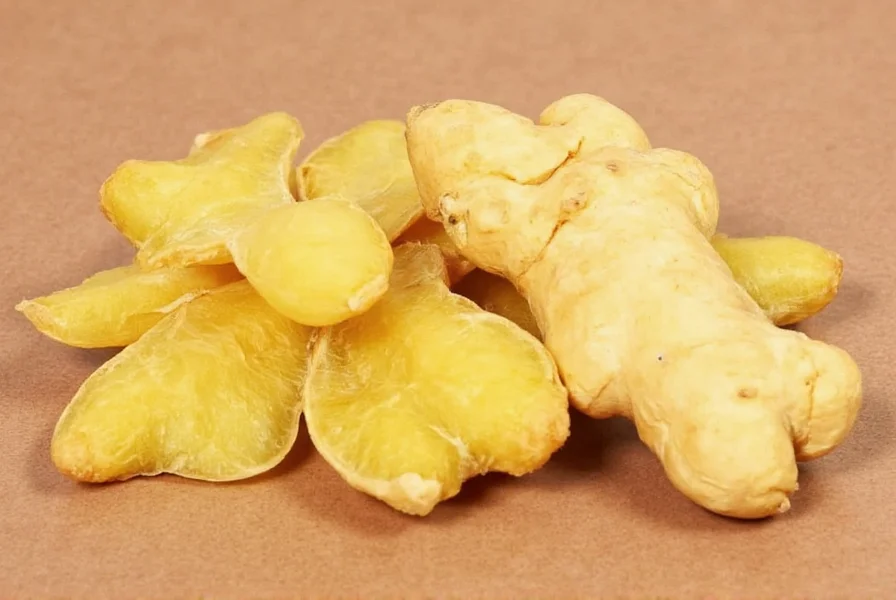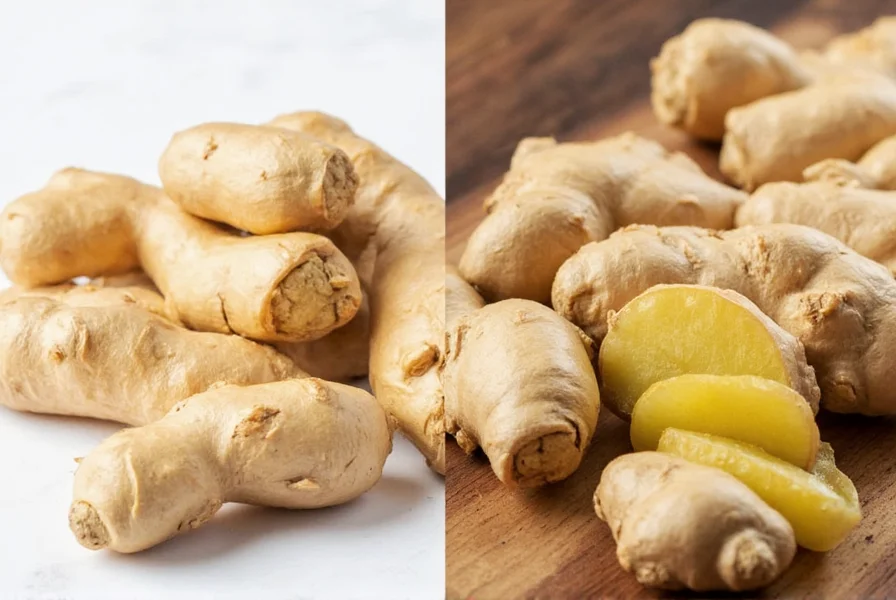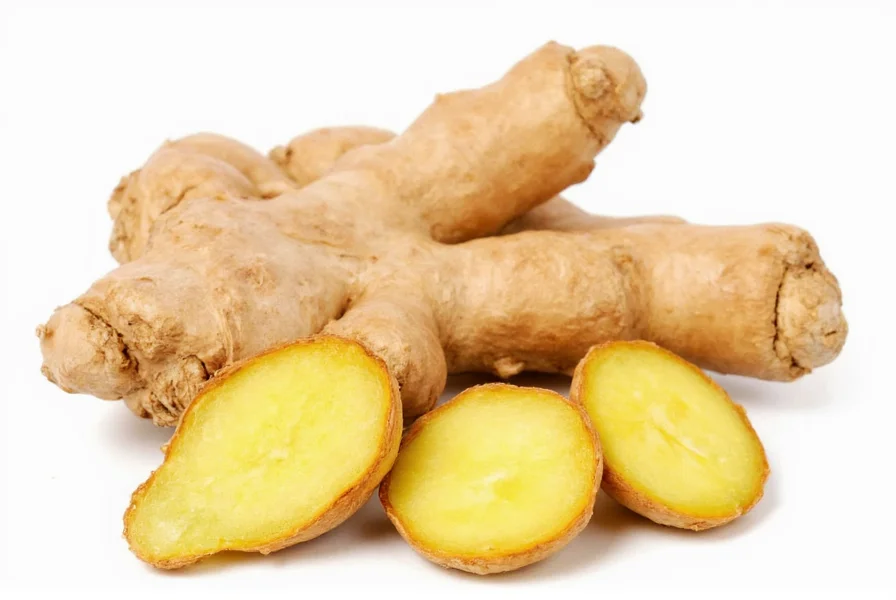Dry ginger represents one of the most versatile and widely used spice forms globally, with historical applications spanning thousands of years across Asian, Middle Eastern, and European culinary and traditional medicine practices. Unlike fresh ginger which contains approximately 80% water, the dehydration process concentrates dry ginger's bioactive compounds, creating a more potent product with distinct chemical properties.
Understanding Dry Ginger Composition
The drying process fundamentally alters ginger's chemical profile. While fresh ginger contains higher levels of gingerols, the dehydration process converts these compounds into shogaols, which are smaller molecules with increased bioavailability. Research published in the Journal of Agricultural and Food Chemistry indicates that dry ginger typically contains 3-5 times more shogaols than fresh ginger, contributing to its more intense flavor and potential therapeutic properties.
| Compound | Fresh Ginger (per 100g) | Dry Ginger (per 100g) |
|---|---|---|
| Gingerols | 1.5-2.5g | 0.8-1.2g |
| Shogaols | 0.1-0.3g | 1.5-2.5g |
| Zingerone | 0.2-0.4g | 0.5-0.8g |
| Moisture Content | 78-82% | 8-10% |
Dry Ginger vs. Fresh Ginger: Key Differences
When considering differences between dry ginger and fresh ginger, several factors become apparent. The most significant distinction lies in water content and concentration of active compounds. Dry ginger offers more intense flavor with less volume required in recipes—typically using a 1:3 ratio where 1 teaspoon of dry ginger equals approximately 1 tablespoon of fresh grated ginger.
The flavor profile differs substantially as well. Fresh ginger provides bright, citrusy notes with pronounced heat, while dry ginger delivers deeper, warmer, and more complex flavors with earthy undertones. This makes dry ginger for digestion applications particularly effective, as the concentrated compounds may provide more potent gastrointestinal benefits.

Nutritional Benefits and Scientific Evidence
The nutritional value of dried ginger includes significant concentrations of bioactive compounds that have been studied for various health applications. According to research in the International Journal of Preventive Medicine, dry ginger demonstrates notable anti-inflammatory properties due to its high shogaol content. These compounds may help reduce inflammation markers in the body, potentially benefiting those with chronic inflammatory conditions.
One of the most well-documented health benefits of dried ginger powder relates to digestive health. Clinical studies suggest that dry ginger may accelerate gastric emptying, reduce nausea, and alleviate symptoms of indigestion. A systematic review published in Nutrients journal found that ginger supplementation (typically 1-1.5g daily of dry ginger extract) significantly reduced nausea severity in various populations.
Culinary Applications of Dry Ginger
Understanding how to use dry ginger in cooking properly can transform your culinary creations. Unlike fresh ginger which works best added later in cooking to preserve volatile compounds, dry ginger benefits from being added earlier to allow its flavors to fully integrate into dishes.
In baking applications, dry ginger shines in recipes like gingerbread, spice cakes, and cookies where its concentrated flavor penetrates doughs and batters effectively. For savory applications, it works exceptionally well in spice blends, marinades, and slow-cooked dishes where prolonged cooking enhances its complex flavor profile.
When exploring using dry ginger in baking recipes, consider these professional tips:
- For optimal flavor release, briefly toast dry ginger in a dry pan before use
- Combine with complementary spices like cinnamon and cardamom for balanced flavor profiles
- Store in airtight containers away from light to preserve potency
- Use slightly less than recipe specifications when substituting for fresh ginger

Storage Recommendations and Shelf Life
Proper storage is essential for maintaining the quality of dry ginger. Exposure to moisture, light, and air accelerates degradation of its volatile compounds. For maximum shelf life, store dry ginger in an airtight container in a cool, dark place. Under these conditions, high-quality dry ginger maintains optimal flavor and potency for 2-3 years.
When evaluating storage tips for dried ginger, watch for these signs of degradation:
- Fading color (from vibrant yellow to dull brown)
- Loss of characteristic aroma
- Clumping due to moisture absorption
- Mold growth (in cases of significant moisture exposure)
Safety Considerations and Potential Interactions
While generally recognized as safe, dry ginger may interact with certain medications. Individuals taking blood thinners should consult healthcare providers before consuming large amounts of dry ginger, as it may enhance anticoagulant effects. The recommended daily intake for culinary use ranges from 0.5-2 grams, while therapeutic doses in studies typically range from 1-3 grams daily.
Those with gallstone conditions should exercise caution, as ginger may stimulate bile production. Pregnant women should consult healthcare providers regarding appropriate consumption levels, though moderate culinary use is generally considered safe.
Conclusion
Dry ginger represents a concentrated, versatile form of this ancient spice with unique properties that distinguish it from fresh ginger. Its intensified flavor profile, extended shelf life, and concentrated bioactive compounds make it valuable for both culinary applications and potential health benefits. Understanding the medicinal properties of dried ginger alongside its proper usage can help consumers maximize its benefits while avoiding potential issues related to improper storage or excessive consumption.
What is the difference between dry ginger and ginger powder?
Dry ginger refers to the dehydrated ginger root in any form (slices, chunks, or powder), while ginger powder specifically describes the finely ground form. All ginger powder is dry ginger, but not all dry ginger is in powdered form. The powder form offers more consistent measurement for cooking and potentially better extraction of compounds in tea preparations.
Can I substitute dry ginger for fresh ginger in recipes?
Yes, but with important considerations for dry ginger versus ginger powder substitution. Use a 1:3 ratio where 1 teaspoon of dry ginger equals 1 tablespoon of fresh grated ginger. Remember that dry ginger has a more intense, earthy flavor compared to fresh ginger's bright, citrusy notes, so the final dish will have a different flavor profile.
How much dry ginger should I use for digestive benefits?
For digestive support, studies suggest 0.5-1.5 grams of dry ginger powder daily. This typically translates to 1/4 to 1/2 teaspoon. For immediate relief from occasional indigestion, 1/4 teaspoon of dry ginger powder mixed in warm water can be effective. Consistent daily consumption at lower doses may provide more sustained digestive benefits.
Does dry ginger lose potency over time?
Yes, dry ginger gradually loses potency due to oxidation and evaporation of volatile compounds. Properly stored in an airtight container away from light and moisture, high-quality dry ginger maintains optimal potency for 2-3 years. After this period, while still safe to consume, the flavor intensity and concentration of bioactive compounds decrease significantly.
Is dry ginger effective for nausea relief?
Research indicates that dry ginger can be effective for certain types of nausea. Multiple studies show that 1-1.5 grams of dry ginger powder significantly reduces nausea severity, particularly for motion sickness, morning sickness during pregnancy (after consulting a healthcare provider), and post-operative nausea. The concentrated shogaols in dry ginger appear to contribute to these dry ginger tea benefits for nausea relief.











 浙公网安备
33010002000092号
浙公网安备
33010002000092号 浙B2-20120091-4
浙B2-20120091-4